Check out Grant Wood's comments about American Gothic and what he portrayed in this painting.


The immigration activities are designed to help students understand, interpret and appreciate the story of immigration to America, to Iowa and to Waterloo. Students will interpret artifacts such as biographical information, photographs, letters, maps, and news clippings to discover how people from various regions throughout the world came to Iowa long ago and in the recent past.
1 - Immigration Timeline to U.S. 1815-1954
After exploring photos and reading background information describing why immigrants came to America, students work in pairs to complete a chart indicating what caused immigrants to leave their homelands and the effects immigrants had in their new American communities (see key below). Understanding the important vocabulary words, cause and effect, will be essential to completing the table.
Then students identify a “secondary effect” for each original event. For example:
CAUSE: 1846 — The potato famine in Ireland
EFFECT: Many Irish people to immigrate to America.
SECONDARY EFFECT: Neighborhoods composed predominantly of Irish people develop in many American cities.
| Key | |
| CAUSE | EFFECT |
| 1815 — The first great wave of immigration begins. | B = Five million immigrants come to America between 1815 and 1860. |
| 1846 — The potato famine in Ireland | D = Many Irish people to immigrate to America. |
| 1862 — Congress passes the Homestead Act which grants citizens 160 acres of land in the west. | A = Many immigrants want to come to America to own their own land. |
| 1897 — Pine-frame buildings on Ellis Island are burned to the ground in a disastrous fire. | F = Ellis Island receiving station reopens with brick and ironwork structures. (1900) |
| 1910 — The Mexican Revolution | E = Thousands of people from Mexico come to the United States seeking employment. |
| 1914-18 — World War I | G = Immigration to the United States stops. |
| 1921 — An immigration law is passed that limits the number of immigrants from each country. | C = Immigration drops off. |
| 1954—Mass immigration to America ends. | H = Ellis Island closes. |
2 - Push and Pull Factors
Have students brainstorm reasons immigrants came to America. Direct students to think about factors that would “push” immigrants to leave their home countries. Then have them think about factors in America that immigrants would find attractive, that would “pull” them toward America. After reading the material on push/pull factors found on the webpage, complete the “push/pull” chart as a group or in pairs (see key below).
| PUSH FACTORS | PULL FACTORS |
| In 1846 the Potato Famine leaves many people in Ireland without food. | |
| All across Europe there were huge crop failures in 1846 and 1847. Many farmers in Europe could not pay for their land. | |
| The US Congress passed the Homestead Act in 1862. It granted citizens of the United States 160 acres of land in western areas of the country. | |
| Between 1880-1900 thousands of factory jobs become available in the United States because of westward expansion and development of new industries. | |
| Many Jewish people leave Russia in 1882 because of hatred toward them. This kind of racism is called anti-Semitism. |
3 - Explore Ellis Island
Using an LCD projector display the photos and videos of immigrants arriving at Ellis Island. As students analyze the visuals, the following large group discussion questions will help to focus their work:
Use the photos and virtual tour of Ellis Island as the basis for a descriptive writing assignment. Students will assume the identity of one of the people in the photograph. Composing a letter back home, they will describe their experience passing through Ellis Island and the journey from Ellis Island to Waterloo, Iowa.
4 - A Word is Worth a Thousand Pictures
Students will work with a learning partner to review the photo of immigrant children (circa, 1908). Observation questions direct them to interpret the image using their prior knowledge and critical thinking skills.
Using the photograph as a starting point, ask students to assume the identity of one of the people in the photograph and write a letter back home. Key question starters are provided to help students create their character. Print the photo on the upper half of a sheet of paper. Have students write their letter on the lower half describing their experience as an immigrant to America.
5 - Immigrant Stories of Yesterday
Students will read and interpret biographical information about four men who came to Waterloo to find work during the late 1800’s and early 1900’s. Then they will interpret the challenges faced by early immigrants by creating an illustrated timeline with drawings arranged chronologically to illustrate the type of work each person did.
6 - Voices of the Past
Students will read and listen to audio files describing the stories of six immigrants who came to Waterloo during the early part of the 20th century. Using a graphic organizer, students will summarize each person’s ethnic origin, home country, reasons for coming to the Waterloo, occupation, and cultural aspects they brought with them when making a new life in America.
7 - One Immigrant’s Experience
Using the biography of Maren Olesen coming to the United States, students will interpret artifacts and photographs to discover the story these resources contain. Using the world map, students will trace Maren’s route to the United States from Denmark in 1890. Then they will use the map of the United States to draw Maren’s route from New York to Waterloo.
8 - The Mystery of the Lost Trunk
Students relive the experience of an immigrant child as they solve the “mystery of the lost trunk.” Being found in New York with nothing but high aspirations and a few dollars, students use their math skills to replace the “lost” trunk and its contents. A 1908 price list for common articles is provided as a starting point.
9 - Where Did We Come From?
Students begin by interviewing their family members to discover the parts of the world their ancestors came from. Then they create a map picture representing their cultural heritage. Examples of other students’ work is provided.
10 - Immigrant Interview
Students will develop interview questions, conduct an interview with a person who has recently immigrated to the community, write a summary of the major points of the interview, and share the summary with classmates.
Anderson, Dale. Arriving at Ellis Island. (Landmark Events in American History series). World Almanac Library, 2002.
Reading Level: 6.6
An overview of immigration to the United States in the nineteenth and early twentieth centuries, with an emphasis on the important role that Ellis Island played in processing the newcomers. Includes historical photographs.
Hoobler, Dorothy and Thomas. The Scandinavian American Family Album (American Family Albums Series). Oxford University Press, 1997.
Reading Level: 7.6
Like the other titles in this series, this book uses first-person narratives to describe the challenges faced by a group of people who immigrated to the United States. Includes numerous historical photos and detailed descriptions of everyday life.
Hoobler, Dorothy. We Are Americans: Voices of the Immigrant Experience. Scholastic, 2003
Reading Level: 6.3
Using personal narratives, this book chronicles the changing patterns of U.S. immigration over the years with a focus on the challenges faces by immigrants and how these newcomers have changed the United States.
Levine, Ellen. …If Your Name Was Changed at Ellis Island. Scholastic, 1993
Reading Level: 5.9
Using a question-and-answer format, this book explains what it was like to go through the immigration process on Ellis Island from the 1880’s to 1914.
Olson, Kay Melchisedech. Africans in America. (Coming to America series). Blue Earth Books, 2002.
Reading Level: 6.3
This book describes the horrors endured by Africans on the slave ships bound for America and the ensuing years of slavery. Includes archival photos, Internet sites and a listing of famous African-Americans. Additional nationalities are covered in other titles in this series.
Giff, Patricia Reilly. Maggie’s Door. Wendy Lamb Books, 2003
Reading Level: 5.2
A boy and girl set out on a dangerous journey from famine-plagued Ireland, hoping to reach a better life in America. Immigration history comes to life through a theme of courage and hope for the future. Factual information on the potato blight is presented in an afterword.
Hesse. Letters from Rifka. Puffin Books, 1993.
Reading Level: 5.1
Based on a true story, this novel describes the trials and perseverance of immigrants on their voyage to America. Twelve-year-old Rifka and her family flee to America in 1919 to escape the harsh treatment of Jews in Russia. Rifka documents the hardships in letters to her cousin, written in the blank pages of a book of poetry.
Hest, Amy. When Jessie Came Across the Sea. Candlewick Press, 1997.
Reading Level: 3.5
A thirteen-year-old girl from Eastern Europe immigrates to New York City, where she works as a seamstress for three years to earn money to bring her grandmother to the United States. The striking illustrations portray life aboard an immigrant ship and a spirit of hope and optimism.
Woodruff, Elvira. The Memory Coat. Scholastic, 1999.
Reading Level: 6.2
Through the experiences of two children, readers learn why Russian-Jewish families fled to America at the turn of the century to escape persecution. In an author's note, Woodruff describes the true story of an immigrant child who got through the dreaded Ellis Island inspections after her family turned her coat inside out.
Woodruff, Elvira. The Orphan of Ellis Island. Scholastic, 1997.
Reading Level: 5.5
During a school trip to Ellis Island a lonely ten-year-old orphan boy travels back in time to 1908 Italy and accompanies two young emigrants to America. An author's note tells of Woodruff's own Italian immigrant relatives. The time travel fantasy provides a sense of history and offers an unusual perspective on the true meaning of family.
The industrialization activities are designed to help students understand, interpret and appreciate the story of early industrialization in Waterloo. Specifically students explore the concept of interdependence as applied to population growth, transportation development and industrial expansion. This study of Waterloo’s ag-industry becomes a case study in economic development as students interpret artifacts including biographical sketches, advertisements, photographs, and news clippings. These primary sources reveal how industry, transportation and the community resources worked together to become a mutually beneficial, self-sustaining economic ecosystem.
1 – Cause and Result Relationships
After exploring photos and reading background information related to Waterloo’s early development, milling, railroading and meat packing, students work in pairs to create a fishbone diagram illustrating how various economic factors were connected to each other through cause and result relationships. Understanding the key vocabulary words, cause and result, will be essential to completing the diagram.
2 – Profiles of Early Ag Businesses
Ask students to identify how early the businesses and industries in Waterloo developed interdependently. Then have students read the business profiles describing some early industries of Waterloo. Ask individual students become “experts” on one industry that they will profile for the class. Then with a partner, have them complete the graphic organizer identifying the similarities and differences between these businesses.
3 – Where Are the Women?
As students read the background information and analyze the visuals, the following large group discussion questions will help to focus their work:
Use the photos and discussion as the basis for a career education research activity where students work with a partner to review current advertisements for available jobs. In addition to investigating the kinds of job options today, have students explore current job opportunities for women. Then have students write a paragraph comparing employment opportunities for women in 1900 with today’s world of work.
4 – Industrial Classification
Students will read and interpret information about selected industries that thrived in Waterloo during the late 1800’s and early 1900’s. Then, students create a classification system to group the industries by type. The activity closes with students identifying the companies that still exist today and writing a paragraph explaining why these companies have survived for over 100 years.
For students who won’t be able to cut and paste a copy of the list of companies, it may be helpful to print a copy of the following for each student prior to the lesson:
| Put a star beside each company that is still in business today.The Altstadt & Langlas Baking CompanyBeck-Nauman & Watts CompanyCanfield Lumber CompanyWaterloo & Cedar Falls Rapid Transit RailwayWilliam Galloway CompanyWaterloo Gasoline Engine CompanyRath Packing CompanyWilliam A. Welty CompanyLitchfield Manufacturing CompanyThe Iowa Dairy Separator CompanyDeere & Company (originally The John Deere Company) |
5 – Production Prediction
Ask students to think about how industrialization increased the scale of production and brought about manufacturing systems.
In this activity, students will read about the concepts of mass production, specialization, and division of labor. Then they work with a partner to complete a chart and predict which industries in 1900 would likely have used specialization, division of labor and mass production and which ones would not.
Next, partners will complete the Mass Production Matrix. Specifically they identify the advantages and disadvantages of mass production from the perspective of factory owners, factory workers, and consumers.
Finally, partners list items found in the classroom which were mass produced and those that were made by hand. Provide an opportunity for students to share their lists with the class as an oral presentation.
6 - Evolutions and Revolutions in Transportation
After observing photos and exploring background reading information, students will describe how railroads helped factories and food processing industries grow in the early 1900’s.
Then students will review the Prairie Pathways map, and write a paragraph describing how transportation routes have changed from pioneer days to modern times.
Bial, Raymond. The Mills. (Building America series). Benchmark/ Cavendish, 2002.
Reading Level: 6.5
Looks at the different types of mills used by people in the 1800’s to grind grain, saw logs into lumber, and create power. Also provides information about the men who specialized in building mills.
Carlson, Laurie M. Queen of Inventions: How the Sewing Machine Changed the World. Millbrook Press, 2003.
Reading Level: 5.2
Provides a look at the history of sewing and how it was transformed in the 1850s when American inventor Isaac Singer not only invented a practical sewing machine, but a way for everyone to afford one.
Crewe, Sabrina. The Triangle Shirtwaist Factory Fire. Gareth Stevens, 2004.
Reading Level: 6.1
Describes the events surrounding the Triangle Shirtwaist Factory fire in March, 1911, and explains how the fire led social reformers and unions to fight for workers' rights.
Josephson, Judith Pinkerton. Mother Jones: Fierce Fighter for Workers’ Rights. Lerner, 1997.
Reading Level: 4.8
A biography of Mary Harris Jones, the union organizer who worked tirelessly for the rights of American workers in their struggle for safety, shorter hours, and the end of child labor.
Kalman, Bobbie. The Gristmill. (Historic Communities series). Crabtree, 1990.
Reading Level: 5.0
Discusses the steps for building a gristmill and grinding grain into flour. Includes numerous illustrations.
Murdico, Suzanne J. Railroads and Steamships: Important Developments in American Transportation. Rosen, 2004.
Reading Level: 7.2
Explains how industrialization created a need for long-distance transportation in nineteenth century America, and chronicles the development of the steam locomotive, railroads, and the steamship.
O’Brien, Patrick. Steam, Smoke, and Steel: Back in Time with Trains. Charlesbridge, 2000.
Reading Level: 5.0
Describes the development of locomotives as seen through the eyes of a young boy and his family’s experiences driving trains from the 1830’s to the present.
Thimmesh, Catherine. Girls Think of Everything: Stories of Ingenious Inventions by Women. Houghton Mifflin, 2000.
Reading Level: 6.0
Tells the story of how women throughout the ages have found creative solutions to problems in everyday life by inventing items such as correction fluid, space helmets, and disposable diapers.
Duey, Kathleen. Zellie Blake: Lowell, Massachusetts, 1834. Aladdin Paperbacks, 2002.
Reading Level: 6.1
A young girl working in the mills of Lowell, Massachusetts, faces a difficult decision when her boss asks her to spy on the other workers. Includes descriptions of daily life in the newly industrialized city of Lowell.
McCaughrean, Geraldine. Stop The Train! HarperCollins, 2001.
Reading Level: 6.2
In 1893 Oklahoma settlers fight the Red Rock Runner Railroad to keep the train coming into town, because they know that without the train their community will die.
Moss, Marissa. True Heart. Silver Whistle/Harcourt Brace, 1999.
Reading Level: 4.2
A young woman at the turn of the century realizes her dream of becoming a train engineer when a male engineer is injured and unable to drive his train.
Paterson, Katherine. Lyddie. Lodestar Books, 1991.
Reading Level: 6.5
A compelling story of an impoverished Vermont farm girl who becomes a factory worker in Lowell, Massachusetts. Lyddie is a strong female character who depicts the miserable life of mill workers in the 1800’s.
The Field Trip Guide provides things to do before your class visits the Grout Museum and activities for your class to do after visiting the Grout Museum District.
The photographs and biographical information about Beulah Usher found on this Website are recommended for grades 4-8. This web activity can be used to teach or supplement units on:
The activities are designed to help students understand, interpret and appreciate early farming practices and the life of Beulah Usher who lived in Cedar Rapids, Iowa during the first half of the 20th century.
Activities require students to work as museum curators. They will interpret photographs and biographical information to discover the story these resources contain.
Following the scientific method, students will start by forming hypotheses or "guesses" about the meaning of an object. Their hypotheses will then be tested by consulting sources of evidence that either confirm or disprove their "guesses."
For each source, suggested questions are provided on the classroom activities page. These can be adapted and applied as the teacher chooses.
Explore the following teaching and learning resources on Beulah Usher.
As students work with partners to complete the chart activity, inferring, analyzing and deduction will occur. These collaborative learning activities provide an opportunity for give and take discussion of findings and sharing of research responsibilities.
The collaboration rubrics may help when evaluating this activity.
As an extension of their research on the life of Beulah Usher, pose the following questions to the class: If Beulah was your age and lived in your neighborhood, how would her life be different? From what you read about her life as a farmer and student and from what you observe from the photographs of her life, what school and community activities would she be interested in today?
The Field Trip Guide provides learning activities to complete before your class visits the History Center and activities for your class to complete after visiting the History Center.
The Web-based Kelsey family letters, photographs and map study activities are recommended for grades 4-8.
The activities address understanding the life of Jane and James Kelsey, early pioneers who settled near Cedar Rapids, Iowa.
Activities require students to work as museum curators. They will interpret artifacts such as historical letters, photographs and maps to discover the story these resources contain.
Following the scientific method, students will start by forming hypotheses or "guesses" about the meaning of an object. Their hypotheses will then be tested by consulting sources of evidence that either confirm or disprove their "guesses"
For each source, suggested questions are provided on the classroom activities page. These can be adapted and applied to other artifacts as the teacher chooses.
Explore the following teaching and learning resources on the Kelsey family.
Activity Summary:
Letter reading activities are designed to help students interpret 19th century letters as primary sources of historical information. The Documents page provides a complete list of historical resources including the letter reading activities. These activities will also help students to develop questions that illuminate the life of a pioneer farm family. Students will interpret historical facts and concepts as they apply the elements of historical inquiry.
The investigation is guided by a spectrum of questions that range from the general to the specific. For a more general approach, younger students can answer questions such as: Who wrote the letter and why was it written?
For more involved investigations, older students can seek answers to the specific "ask the curator" questions inserted within each letter on post-it notes.
This web activity can be used to teach or supplement units on:
Notes Regarding the Letters
The letter dated 02/16/1849 was written by John H. Kelsey to his brother James who was still living in Lewiston, Niagara County, New York. Their parents were Charles Pemberton and Rachel [Sutphen] Kelsey.
John was born in 1819 and James in 1821 at Mound Farm, Niagara County, N.Y. James followed John to Linn County in 1851 and bought the farm John had purchased. James returned to New York in 1853, married Harriet Jane Rogers and brought his bride back to the "Cottage Home" he had built at a bend in the Red Cedar River. Jane was born in 1823 at Pekin N.Y.
They had an early Post Office called Mon Dieu in their home, thus the reference in the letter dated 07-04-1854 about putting up the mail. The close-up view of the 1859 map shows the location of the Post Office.
The letter dated 07/04/1854 was written by Jane to her sister Mary.
Based on the information found in the Kelsey letter of February 16, 1849, select from the following activities based upon the themes found in the Kelsey letters.
Based on the information found in the Kelsey letter of July 4, 1854, select from the following activities based upon the themes found in the Kelsey letters.
Based on the information found in the Kelsey letter of September 20, 1863, select from the following activities based upon the themes found in the Kelsey letters.
Activity Summary:
Acting as curators, students will be asked to explore the four maps listed below. Initially, no dates will be provided. By looking for geographic detail, using map color clues, and searching for evidence of community development from one map to another, students will discover the order in which the map were created.
1859 Kelsey Bend Map
J.C. (James Cooper) Kelsey land with Post Office Mon Dieu in relation to Cedar Rapids and Red Cedar River.
Map of Linn County Iowa, compiled and published by Mc.Willimas & Thompson, 1859
1859 Close Up Map
Close up of 1859 Kelsey Bend Map
Map of Linn County Iowa, compiled and published by Mc.Willimas & Thompson, 1859
1906 Color Map
Kelsey land (144 ½ acres) now owned by H.M. (Heinrich) Kelsey, Jane and James' son. Also shows Stony Point school.
Clinton Township, Atlas of Linn Count: Davenport: The Iowa Publishing Company, 1907
plat map 2001
Activity Summary:
Students will work with a learning partner and review the 1880's cottage photo and discuss observation and interpretation questions using the photo analysis guide.
The Field Trip Guide provides things to do before your class visits the History Center and activities for your class to do after visiting the History Center and extension ideas.
The following supplemental activities could be part of learning centers, post fieldtrip activities or assigned as homework to extend learning beyond the letters, maps and photos provided on the History Center Excursion.
Write a letter to a museum curator with questions or intriguing observations about a pioneer exhibit and request professional expertise on the topic.
Use Pioneer Farms and Farming resources and American Memory to develop a poster or PowerPoint presentation illustrating the daily life of a pioneer family.
Research who came to the Midwest as immigrants and where they settled in the state.
Explore your community for resources on pioneer artifacts and create a photo book of the artifacts.
Create 10- to 20-second news flashes about an aspect of pioneer life (journey to or the settling of an area in the Midwest or life of the pioneers--fires, locust, etc.). The news flashes could be designed as audiotapes for radio or video files for television news.
Research and plan a pioneer journey from Cleveland, Ohio to Cedar Rapids, Iowa including mileage/day, cost, supplies, total costs, etc.
Find recipes used in pioneer times; research the ingredients used and theorize why these ingredients were used. Select and prepare one of the recipes.
The letters, poems and photographs of Jay G. Sigmund found on this Website are recommended for grades 4-8.
The activities are designed to help students understand, interpret and appreciate the life of Jay G. Sigmund, a businessman who lived in Cedar Rapids, Iowa during the first half of the 20th century.
Activities require students to work as museum curators. They will interpret artifacts such as biographical information, a letter, poems and photographs to discover the story these resources contain.
Following the scientific method, students will start by forming hypotheses or "guesses" about the meaning of an object. Their hypotheses will then be tested by consulting sources of evidence that either confirm or disprove their "guesses."
For each source, suggested questions are provided on the classroom activities page. These can be adapted and applied as the teacher chooses.
Explore the following teaching and learning resources on Jay G. Sigmund.
After viewing each of the artifacts, assume that our civilization has come to an end and imagine what inferences future civilizations might make about us based on these artifacts. Write a story that might appear in a newspaper in 4,002 as a result of finding the artifacts that remain from our civilization.
The Field Trip Guide provides things to do before your class visits the History Center and activities for your class to do after visiting the History Center.
At the time of this interview Cliff Smith was living in Waterloo, Iowa.
He was born in Carbon, Kentucky January 6, 1902. He moved with his family to Waterloo in 1911. His father was a carpenter by trade but he came to Waterloo to work on the railroad. Educational opportunity was one of the chief reasons the Smith family moved north to Iowa.
The prejudice in the South at that time was intense. African American children were not generally allowed to go to school with white children. In this regard Mr. Smith said, “I lived across the street from the only white school in that town and when the teacher was sick, my mother would go over there and substitute for the teacher, but we couldn't go to school. So my oldest sister went twenty-five miles to the county seat to school everyday.”
Following grade school and high school, Mr. Smith attended Howard University for three years before attending Morningside College in Sioux City. As a young man, Mr. Smith was a concert organist. He said, “I did nothing but concert work and I played at theaters. I am the first person that ever played the Paramont Theater organ. I played at the old Plaza Theater once here in Waterloo. Then as a youngster I traveled. I played at Louisville, Dayton, Washington, D.C. and Columbus, Ohio.”
Mr. Smith said he was always able to get work during the Depression. He managed the Elks Club 290 and Sunnyside Country Club. Of his experience during the Depression he said, "In those days it was very rough for people . . . I was very fortunate. . . my father always had a job. But people suffered a lot. Malnutrition, doctors would come to your house and say 'Well the child needs food.' But you know, I never run into anything so terrible in the Depression personally. . . We were always able to have a job. So we got along all right.”
Mr. Smith didn't feel that the Depression affected African American people any differently than white people. He said, “Everybody was having a hard time. African American people were not hurt any worse than anyone else. Everybody was suffering from it. Lack of food, lack of clothing, lack of homes, run-down property... everybody suffered from it. Today when I look at the houses on this street and the houses on Sumner Street where I live, the property today is better than it was fifty years ago, when it was owned by white people. Because the people now, African American people, are making a little money. They keep their homes up and in those days it was not possible for anyone hardly to keep their homes up.”
Mr. Smith started his own restaurant as a result of the segregation in Waterloo's restaurants. He said, ". . . There was one restaurant downtown. All the [African American] kids that worked downtown went to this segregated place. They had to go in the back door and go in the basement I went down there one day and I saw all of those people down there and I said, 'What are all of you guys doing down here?' I said, 'If I was in Mississippi I wouldn't mind going in the back door, but that's policy. But in Iowa, never!' So I came over there and bought that deli over there and started me a restaurant.”
Mr. Smith felt there were some good effects which came from the Depression. He concluded, “Well it taught people how to live when they didn't have. I am telling you that. Depression wouldn't worry me anymore, but I feel sorry for other people. That was one of the fortunate things about [African American] people. We have learned to stand hard times, so we have been very fortunate.”
From: The Explorations in Iowa History Project, Price Laboratory School, University of Northern Iowa, Cedar Falls
Nicholas Sulentic, founder of Waterloo Industries, came to America at age 15 from Yugoslovia. After landing in New York, and being taken in by a family in Illinois, he eventually moved to Waterloo, Iowa.
In Waterloo, Nicholas and his brother Pete started a grocery store in a small wooden building that had formerly been a garage. The business was so successful that the Sulentic brothers built a newer brick building starting Waterloo’s first supermarket and bakery.
Then in 1922, they built a shed behind their supermarket. In the shed they produced an automotive service tool invented by Nicholas. This new tool was called a valve spring compressor.
In those days, the valves of a car engine had to be ground about every 5,000 miles because of carbon buildup. The new invention enabled the engine mechanic to compress the valve springs for replacement in the engine block after the valve grinding job was complete.
At this time the company was called Waterloo Valve Spring Compressor Company. As automobiles evolved, the company expanded to manufacture other tools as well. These included valve lifters and the brake pedal jack. By the early 1930’s Waterloo Valve Spring Compressor Company manufactured 25 different tools. Later the company name was changed to Waterloo Industries.
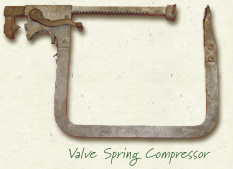
Nicholas and his wife Anna raised six boys, all of whom would eventually play a role in building the family business.
From: http://www.waterlooindustries.com/history.asp
The following information is based upon a transcribed letter written about Henry Nauman and his sweetheart.
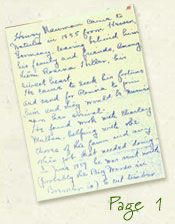
Henry Nauman came to Waterloo in 1855 from Hessen, Germany, leaving behind his family and friends, among them Rosina Hiller, his sweetheart.
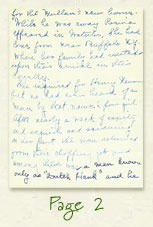
He came to America to seek his fortune. He planned to send for Rosina after he was established in a job. He also planned to marry Rosina just as soon as she arrived.
First he found work with a farmer named Charlie Mullan. He helped with the farm chores and other jobs that needed to be done. In June of 1859 he was sent to the Big Woods in Bremer County to cut timber for the Mullan’s new home. While he was away Rosina arrived in Waterloo. At that time there were no telephones and letters took a long time to arrive. So Rosina had no way to tell Henry that she was coming very soon.

She came to Waterloo through Buffalo, New York where her family settled when they arrived in America. When she arrived in Waterloo, she asked for Henry Nauman. No one had heard of him. How do you think she felt then? After nearly a week of anxiety, anguish and searching on her part, the men returned from their timber cutting. Among them was a man known only as “Dutch Hank”. She knew him as Henry Nauman.
They were married in the Mullan home and continued to live with the Mullans until Henry could build a home of their own. Because they were good friends, they built their house close to the Mullans.

Mr. Beck came to this city in 1856 and at once engaged with the firm of Hosford and Miller, then operating a saw mill with a number of other interests. He continued in this George P. Beck, Sr. was born in Bavaria on Jan. 20, 1833. In 1837, when he was just four years old, his family emigrated to America. They landed at Baltimore on June 7, 1837. His father found work helping to build the James River canal in Virginia. This was the first canal ever built in this country.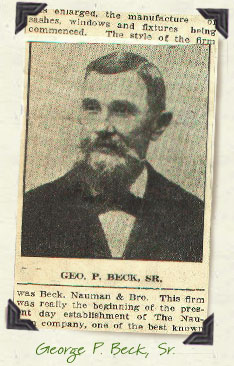 Then George’s family moved to Salina, Ohio, where his father helped to build a large reservoir. Then the family moved to Dayton, Ohio. George considered Dayton his original home because he was a very young boy when his family moved to America. It was in Dayton that he got his start in business and got married. It was also in Dayton that he married to Miss Albertina Shuler in 1853. They became the parents of eight children.
Then George’s family moved to Salina, Ohio, where his father helped to build a large reservoir. Then the family moved to Dayton, Ohio. George considered Dayton his original home because he was a very young boy when his family moved to America. It was in Dayton that he got his start in business and got married. It was also in Dayton that he married to Miss Albertina Shuler in 1853. They became the parents of eight children.
George and Albertina moved to Waterloo in 1856. At first he was employed at the Hosford and Miller Saw Mill. Three years later he was able to start his own saw mill. At the same time he partnered with Mr. D. Kruse in the boot and shoe business. Now he had two businesses.
Soon he met Henry and John Nauman. In December of 1864, they formed a company named Beck, Nauman & Bro. They expanded the saw milling business to produce windows and other wood products for the home and business. Later the business would be called the Nauman Company. It became one of the best known sash and window companies in the country.
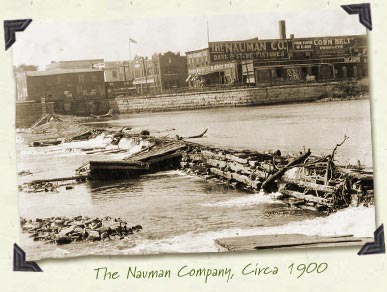
George was a good businessman and had done well with the saw mill and the shoe business. In 1867 he purchased a woolen mill. He wanted to expand this new company, and he built a four-story woolen mill near Bridge Street in Waterloo. But this business didn’t work out as well as the saw mill and the shoe business. In fact, nearly everything he earned from the operation of the saw mill had to be spent to support the woolen mill. So the woolen mill was closed after four years of operation.
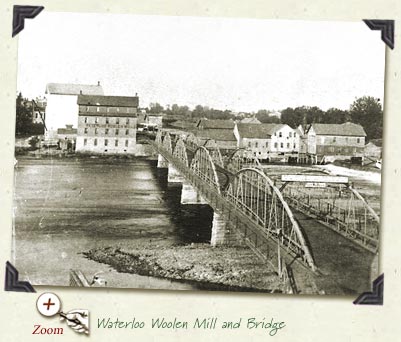
He invested in real estate as well and owned both business and residential property. George P. Beck, Sr., a former pioneer, came to become one of the leading businessmen in Waterloo.
Source: Based upon newspaper article dated January 18, 1909
Inspectors often spoke three or more languages. They helped those immigrants who could not speak English. At this station were also interpreters who often spoke over six languages each.
After 1917, immigrants who were 16 years old or older had to pass a reading test in the language of their home country.
The inspectors presented them with test cards featuring familiar passages from the Bible, which immigrants would then have to read aloud. Failing the literacy test could mean deportation.
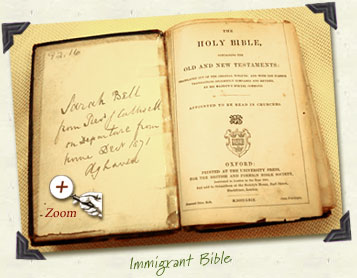
Many immigrants coming to America at this time came from countries where the Bible was commonly read in churches and synagogues as well as schools.

When learning about the past, the term "primary source" refers to objects like documents, letters, diaries, photographs, advertisements or newspaper articles. Almost any print material found in its original form is a primary source. Many primary sources have been rewritten and copied so more people can learn from them.

A "historical artifact" on the other hand, includes primary sources and a lot of other objects. Kitchen tools from a farmhouse, a plow, or a printing press are all historical artifacts. Artifacts can be found almost anywhere and can be helpful in learning about the past.
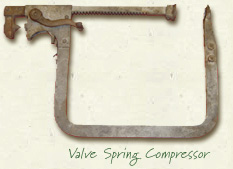
A "secondary source" is a written summary of the past. Usually secondary sources are based on the study of artifacts and primary sources. The best example of a secondary source is a history textbook found in every classroom library.

Copyright © 2022 CampSilos | All Rights Reserved
National Standards | Silos & Smokestacks | Credits | Awards
Crafted by IFC Studios, a midwest Branding Agency.